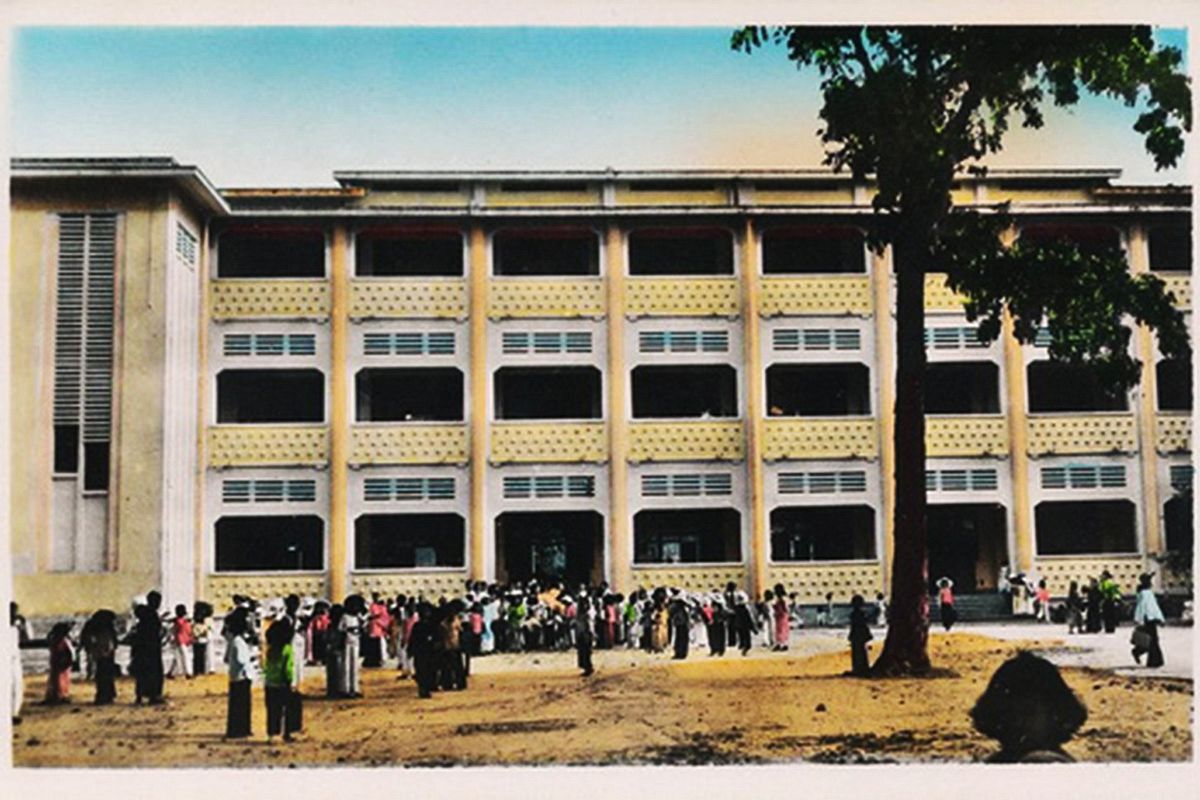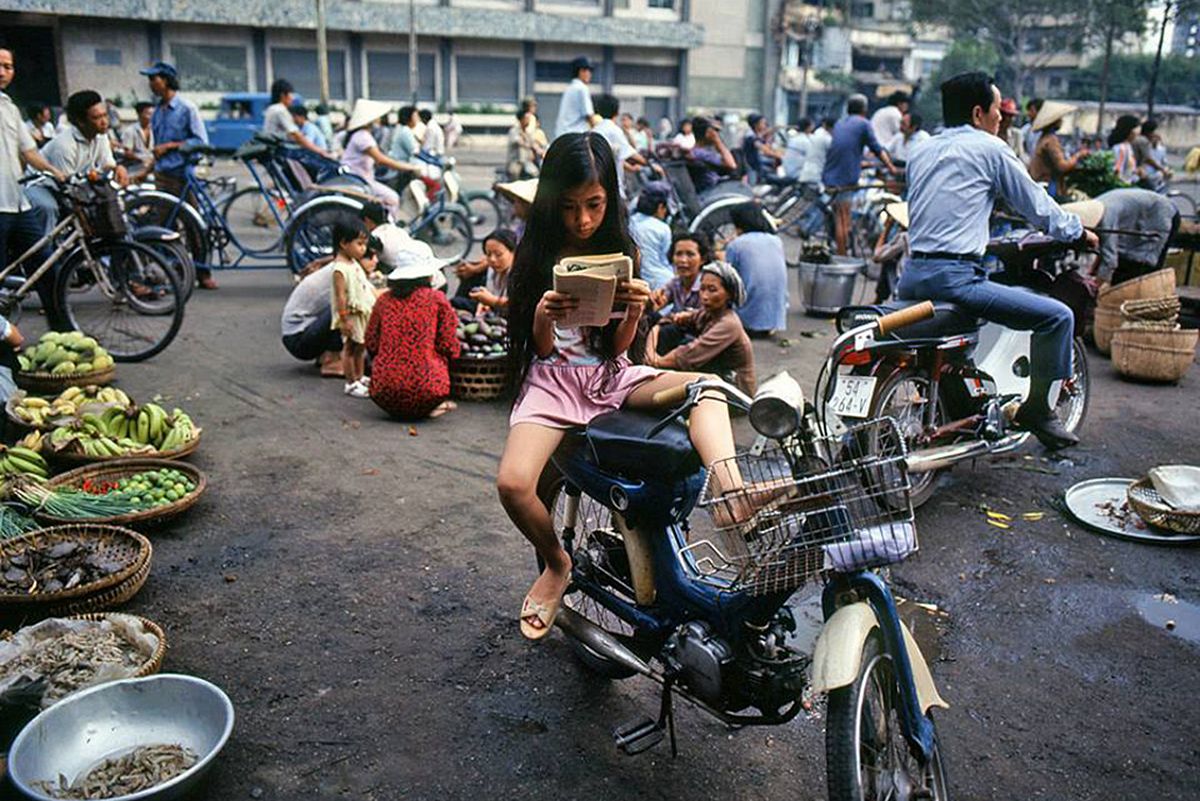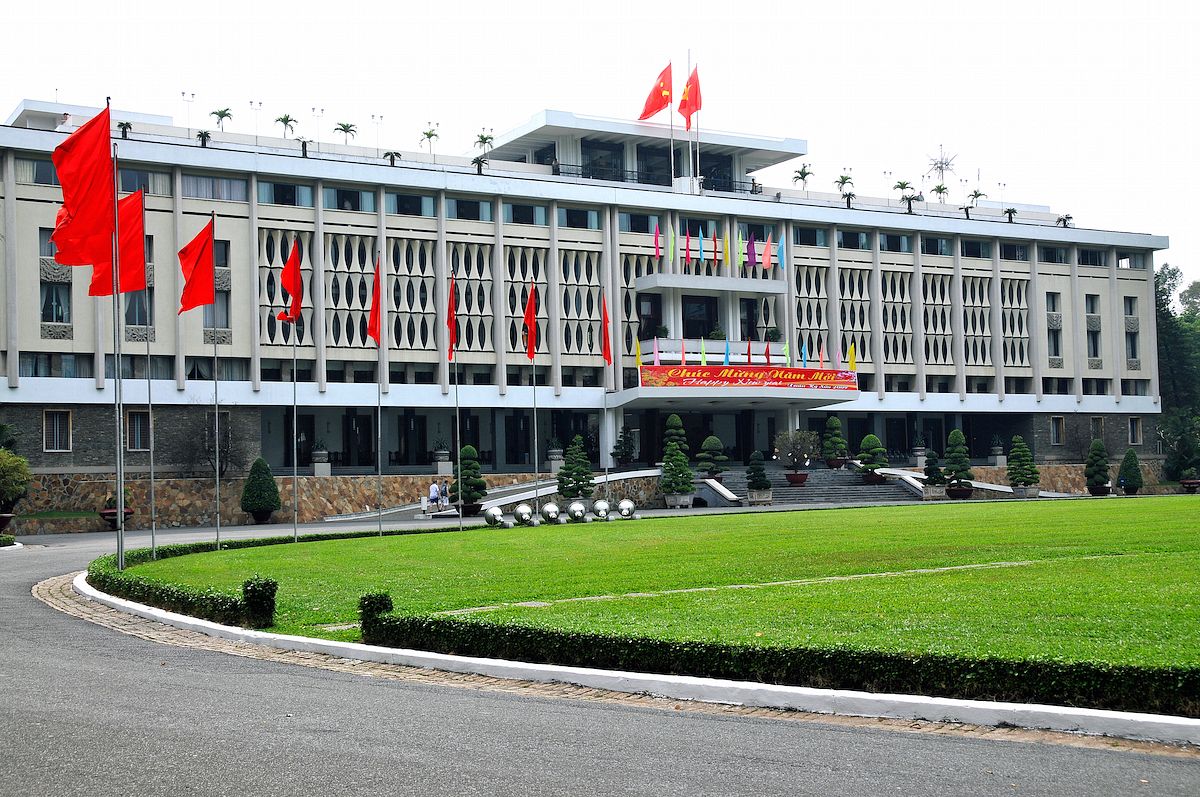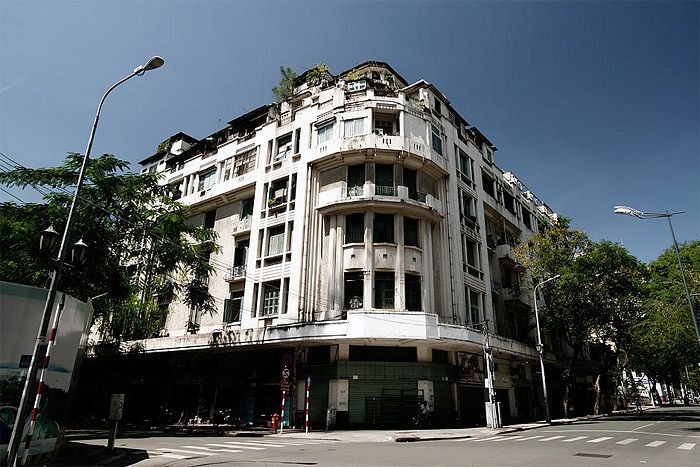In the wake of last week’s announcement in Thanh Nien newspaper that Korean construction company Jimiro will build three 55-story office buildings, a 30-story five-star hotel and a 10-story commercial center in the "Golden Triangle" enclosed by Trần Hưng Đạo, Phạm Ngũ Lão and Nguyễn Thái Học Streets, one of the city’s most historic schools has been earmarked for demolition.
The Ernst Thälmann Secondary School at 8 Trần Hưng Đạo was originally built in 1931 as a kindergarten for local girls, known as the École Maternelle de Chodui. The design by early modernist architect Leo Craste has been praised in the blog Saigon Modernist for its optimization of natural ventilation through the addition of wall louvers and the use of staircases as wind towers. In the late colonial period, the École Maternelle became a high school known as the École Municipale Ton-Tho-Tuong, named after a renowned Nguyễn dynasty scholar, Saigon-born Tôn Thọ Tường (孫壽詳; 1825-1877).

The École Maternelle de Chodui in the early 1930s.
It was in this capacity, in 1950, that the school became the site of the first anti-American demonstration in Vietnam. Starting in the 1920s, Saigon had a long tradition of high schools being hotbeds of anti-colonial activity, and on January 9, 1950, police opened fire on a student protesters as they marched through the center of the city, injuring 30 and killing 19-year-old Trần Văn Ơn, a student from the Lycée Pétrus Ký, now Lê Hồng Phong High School. Thereafter the authorities cracked down hard on any form of dissent.
In March 1950, two destroyers from the US Seventh Fleet, USS Stickell and USS Richard B Anderson, docked at Thủ Thiêm in Saigon, while aeroplanes from the aircraft carrier USS Boxer flew over the city. Foreseeing that this could be a prelude to American involvement in Vietnam, communist activists under Nguyễn Hữu Thọ (later Acting President of Vietnam) organized city-wide protests against US interference in March 1950. On March 18, a grenade was thrown into the lobby of the Continental Hotel, where a visiting American delegation was staying, and mortars were also fired at the two warships at Thủ Thiêm. Then at dawn on Sunday, March 19, rallies were held in various locations around the city. The main event was the rally held at the École Municipale Ton-Tho-Tuong, which reportedly attracted over 250,000 people. Nguyễn Hữu Thọ addressed the crowd, and at around 9am on the third floor of the school, students hoisted a red flag. This event is commemorated by a plaque outside the main entrance of the school.

The stele outside the main gate which commemorates the revolutionary history of the school.
In 1954, the school became the Phan Văn Trị Primary School (Trường Tiểu học Phan Văn Trị), and in 1962 the Cô Giang Secondary School (Trường Trung học Cô Giang). During this period, the original entrance on Phạm Ngũ Lão Street was bricked up and the former rear gate on Trần Hưng Đạo became the school’s main entrance.
After Reunification, the school benefitted from educational links with East Germany, and in 1979 it was twinned with a school in Leipzig and named after Ernst Thälmann (1886-1944), who led the Communist Party of Germany (KPD) during the Weimar Republic years.

The Ernst Thälmann Secondary School at 8 Trần Hưng Đạo.
This is the third occasion over the past 10 years in which revolutionary monuments have been destroyed in favor of development: see The Curious Case of the Vanishing Revolutionary Monuments to learn about the fate of the room in which the Vietnam Revolutionary Youth League’s Cochinchina Regional Committee was set up in June 1928 and the villa at 43 Lê Thị Hồng Gấm which once housed the offices of the revolutionary Dân Chúng newspaper.

Tim Doling is the author of the walking tour book Exploring Hồ Chí Minh City (Nhà Xuất Bản Thế Giới, Hà Nội, 2014) and also conducts Heritage Tours of Saigon and Chợ Lớn - see www.historicvietnam.com.















